Baseball Softball Hitting Power Come From Loading Hip Rotation Before Hands? | Swing Harder, Hit Ball Better, & Farther Drills
Does baseball and softball hitting power come from loading the hips and rotating them before the hands? Discover how to properly AND safely swing the bat harder, hit the ball better, and farther hitting drills.
How “Loading & Exploding The Hips” Can Be VERY Dangerous To The Lower Back…
We’ll get to the above video, but first let me be clear…
I’m not saying the pelvis doesn’t play a role in the swing, because it does. However, I feel this spot reserved in the swing’s sequence of movements is hyper-focused on by a majority of hitting gurus. More and more research is saying extreme “hip thrust” or “loading and exploding the hips” can be VERY damaging to the lower back over time. You’ll see why in a moment, but for now please note that in this podcast episode, former USA Men’s Gymnastics Coach Sommers says the lower back portion of the spine isn’t made for a high degrees of rotation, but the T-Spine is.
Another thing I want to clear up, we don’t teach a 100% pure rotational mechanics here. We teach a blend of linear-rotational. Please CLICK HERE to read our thoughts on this.
In this post, we’ll cover:
- How the spine stacks up (quick anatomy lesson),
- Does consistent power come from the ground? And,
- Teaching hitters a safer more effective swing.
Let’s get started…
SCIENCE-BASED TRAINING:
Improve your hitting strategy dramatically by applying human movement principles.
Learn not only how and what to train but also the science behind the methods.
How the Spine Stacks Up
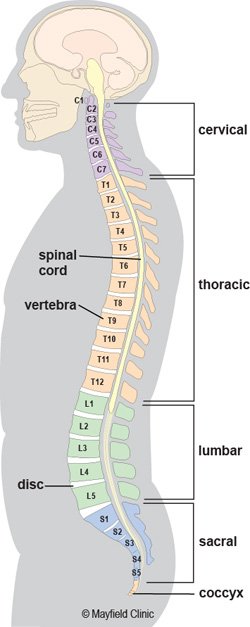
Photo courtesy: MayfieldClinic.com
Here’s a quick anatomy lesson of the spine:
- Cervical – the vertebrae in your neck, consists of 7 vertebrae, are allowed to flex, extend, and rotate,
- Thoracic – the vertebrae in the middle of spine including shoulders, consists of 12 vertebrae, which are also allowed to flex, extend, and rotate, and
- Lumbar – the vertebrae in lower back, consist of 5 vertebrae, and are allowed to flex and extend ONLY.
- Sacral & Coccyx – there are 5 fused vertebrae here, and the Coccyx is sometimes referred to as the “tail” bone.
Did you catch that about the Lumbar? It’s important, so it bares repeating…the vertebrae in the lower back IS NOT built to rotate! Right now, you may be thinking: “Wait a minute, how’s that?! I’ve seen millions of swings, and the hitter’s pelvis (and lower back) are rotating!!”
According to Charlie Weingroff, DPT, CSCS, a physical therapist, a trainer in New York City, and is pretty high up on the human performance food chain, says this:
“Only your thoracic spine (which consists of the 12 vertebrae in your upper and middle back) is designed to rotate significantly — about 40 degrees in each direction, according to Weingroff — when under compression. The lumbar spine (lower back) should rotate no more than about 12 degrees.”
Some movement experts (like Thomas Myers, author of the book Anatomy Trains), says the lower back can rotate no more than 7-degrees. So according to the experts, 7 to 12-degrees is a good rotational range for the Lumbar section of the spine. That’s NOTHING compared to the 40-degrees of rotation – in each direction – of the middle and upper back section of the spine (which includes shoulders).
So what’s happening then? You see, since the lower back vertebrae are not designed to rotate, it’s the surrounding muscles that are rotating a fixed object (non-rotating Lumbar), and is why you do see rotation. The T-Spine vertebrae are built to rotate (again, this includes the shoulders), hence is why hitting coaches should put their rotational focus there and NOT the hips, pelvis, or low back.
Is rotating back hip through the zone necessary for power? Not in the way most coaches think. Consider this quote from Physicist, Electrical Engineer, and author of the book The Spinal Engine, Dr. Serge Gracovetsky:
“The axial rotation of the spine cannot happen unless the spine is flexed by the right amount on the correct side. Coaching an athlete to throw without a proper spinal position is an invitation to severe torsional injuries.”
Dr. Gracovetsky is referring to this “flex” as a side bend with the shoulders. The point is, USE THE SHOULDERS to accomplish rotational power. Warning for coaches: if you shrug this information off because of ego or pride, and continue to teach pelvis, hip, or lower back dominant twisting swings, then you’re wearing holes in the low backs of your hitters. Be careful because the link is there, and one can be held liable.
Don’t worry, I’ll show those coaches doing this unknowingly a safer way, at the end of this post…
Does Consistent Power Come from the Ground?
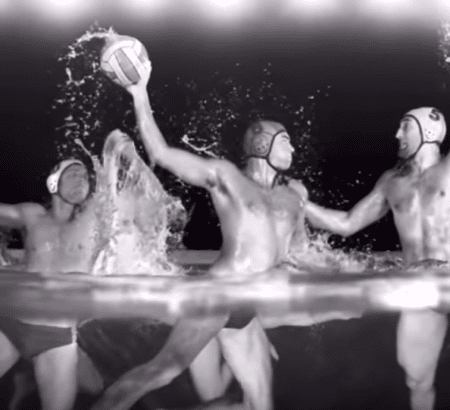
Water Polo throw photo courtesy: YouTube Egy image from video
You may be thinking, but consistent power comes from the ground…the pelvis is the first to interact with Gravitational Forces, and that’s why you teach “hip thrust”. I agree with Ted Williams that the ‘Hips Lead the Way’, but they don’t contribute as much to consistent power as most think. I know this may sound earth shattering for some, so please stay with me here.
CLICK the following link to a post I did titled, “The Swing DOES NOT Start From The Ground & Move Up?”
This brings me to the water polo throw video above…
Let me ask you a question, what do you think the “fastest throw in Water Polo” is? Doing a Google search using those keywords brings up the following statement:
“The overhand shot from a Croatian senior men’s national team player is recognized as the fastest shot in the world at 60 MPH (96.5 KPH). The overhand shot is the standard throwing motion in water polo. It is the same arm motion as a pitcher uses in baseball.”
So, let’s think about this. In water, there are little to no Gravitational Forces, and the best human floating in water, can throw a volleyball-sized ball 60-mph? What do you think the speed would be if this person was floating in water and threw a baseball-sized ball instead? 75-mph? 80-mph? 90-mph? Okay, so let’s say this top-of-the-food-chain water polo player throws a baseball floating in water 80-mph. You’re telling me a top-of-the-food-chain pitcher in the Big Leagues, throwing down a mound, can only throw 20-mph more (assuming 100-mph) than someone throwing the same ball floating in water?!
I dunno, but this begs the question, does the pelvis (and lower Lumbar), OR the shoulders (and T-Spine) contribute the most to pitching velocity AND Ball Exit Speeds?
If you need to see more examples about this, then CLICK HERE for a swing experiment titled, “How Much Ball Exit Speed Does Pelvis Contribute To A High Level Swing?”
Consider this Tweet from one of my readers…
How fast before “squashing bug with the knee” is a thing? @hitperformlab https://t.co/IOso6gZ4yV
— This Is The Way (@Eaglzphan22) August 22, 2018
And I added the following comment…
Buahaha! I love that. Slipping front foot, no extension at front knee, and "hammering bug" with back knee. Result? A dinger! A lot of unhappy gravitational force peeps out there 😂 @backspintee
— Joey Myers (@hitperformlab) August 22, 2018
So what role do I think the pelvis and low back play in the swing, if not power? Directional force. Allows the hitter’s swing to convert Centripetal into Centrifugal Force. In a nutshell, the hitter’s “belt buckle” must point in the direction of the batted ball.
So what’s the answer?
Teaching Hitters a Safer more Effective Swing
Here are some resources to get you started, outside of the ones already mentioned:
- The Swing Does NOT Start From The Ground & Move Up?
- Baseball Hitting Drills Off Tee: Hitting May Be Dangerous To Your Spine [Zepp Swing Experiment]
- Why I Teach Hitters To ‘Show Numbers’ (And Maybe You Should Too)
- Homer Bush Interview: How To Turn A Pitcher’s Best Weapon Against Them
- Matt Nokes Reveals Ways To Dramatically Increase Power
- How To Quickly & Easily Get Your Hitters On-Time With The “Snap Drill”
Coaches, PLEASE get educated. Don’t let ego or pride get in the way of helping hitters swing safe. Like Tony Robbins says,
“If you aren’t growing, then you’re dying.”
- Fix Late Swings Fast: 2025 Pitch Recognition & See-Decide-Swing Training for Youth Baseball Power Hitters - October 6, 2025
- Safe Youth Weighted Bat Training: Proven Overload/Underload Drills to Increase Exit Velocity in Games Starting Tonight - September 29, 2025
- AI Coaching Course 2025: Youth Baseball & Softball Practice Plan + Off-Season & In-Season Workout Builder Fast - September 23, 2025

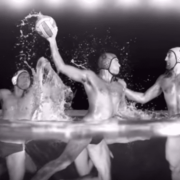
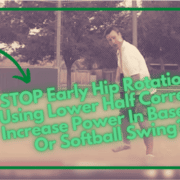
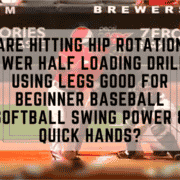


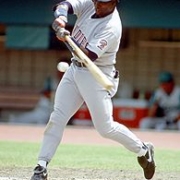
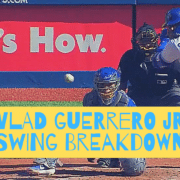
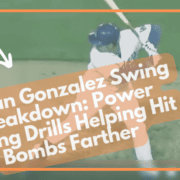
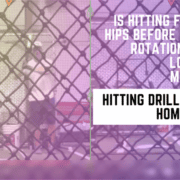



Why would you want to leave any component of power on the table? I don’t care which one contributes the most, I want 100% of all the components! Not maximizing the pelvis may be the difference between a ball caught at the wall or a walk-off home run. 😉
Fred, I agree. That wasn’t the point of this post. Many coaches out there are hyper-focused on teaching power comes from the hips. Do the hips have a role in power, yes. But now how much people think. Do the legs contribute? Yes. But not what most think. That was the point of the post. Of course we teach it all, but it’s important to not only get our hitters swinging effectively, but safely too.
Joey I love this article… perhaps the best way to say it is …do we directly or indirectly use the ground and our lower limbs as a source of power… but I don’t agree with the premise of that statement either… in my view, this whole discussion is difficult…for the ones who do not know it’s over their head… for the ones who know than the super specifics get too specific…and there always that moment off well what about looking at it from this angle… The fact is you need the linear forces to get the rotational going in my view but they come from different parts… imagine that… we have multiple moving parts!!!!
Can there be a middle ground…. I don’t think so…
But in a vacuum, ” how many instructors teach, it’s all in the hips”…yes we don’t focus on the hips per se….
But Joey outside of that vacuum, this gets crazy weird …
One way to put it is, in the high level swing, we use everything… we are typically after initial set up very active in the upper limbs and passive to almost barely active in the lower limbs while the forces being reverse from the center are direct in the upper trunk and indirect in the lower trunk…based on how we are grounded…
I don’t know how that sounds!!! What say you?
~DM
I agree with you Djura. You got the point of this post, which is the pelvis and Gravitational Forces play a role, but ARE NOT the end all be all to consistent power. They play a minor role. What is the role? Directional force. They set the direction and provide approx. 20-25% of power. The rest comes from the shoulders and T-Spine. Yes everything is connected and dependent on each piece. Crazy, top of food chain Water Polo athlete can throw a volleyball sized ball 60-mph…floating in water – using minimal to no Gravitational Forces!! If he threw a baseball in the same scenario, he probably could hit 80-mph! Top of food chain pitchers, using Gravitational Forces and legs, can throw a baseball 100-mph. This is a near perfect comparison to show the role and value of the pelvis, legs, and Gravitational Forces when it comes to throwing or hitting velocity. So why are hitting coaches FOCUSING ON TURNING THE HIPS FOR POWER!! They’re ruining hitter’s low backs in the process. Ask better questions coaches. Thanks for the comment Djura as always.
Joey,
Great article! I think your main message is that the cue, “load and explode the hips,” is over emphasized, as you put it, “hyper-focused on.” Again, we are dealing in coaching cues and semantics.
Fred, the cue is a bad one. I never like the cue, “load,” because a player thinks he has to push his hands back, barring his arm in the process. Although it sounds kind of forceful and aggressive and, therefore, attractive, “load and explode” is made worse by its interpretation by the player, who takes it literally. The player then goes out and tries to execute it, never realizing that, in so doing, he could be “exploding” his lower back. The takeaway is: watch what you say, how you say it, and, most importantly, how it is perceived by the player you are coaching. Coaching cues should reflect and be compatible with the skill a player is expected to execute. Most of all, coaching cues should conform to human movement science.
Dr. Serve Gracovetsky has provided the science behind the counter-rotational movements (Joey’s “showing the numbers”) of players like Ted Williams, Barry Bonds, Miguel Cabrera, Adrian Gonzalez, Josh Donaldson, and Justin Turner. Fred, watch their movements. There’s no “loading and exploding the hips.”
Right on with your comment Joe, and I agree 100%.
Joe…
I know you don’t like the barring but for me it’s part of it… However if you saw me swing you might not see the barring…
As to the hips….Man I do like feeling some tension and forces on my hips… it keeps me in check… like my own check point… I also like having triggers that control (I.e., open, engage, unload…etc.) my hips…
Load and explode the hips makes no sense since the hips have multiple slings, movements …etc.
So it’s a no discussion to start…
This is by far not a perfect example but if I had a tree and planted it in the ground and pulled the tree back to blast off a big rock, would that mean the top part of the tree is powerful…
So can loading be tightening, compressing and resisting….and exploding be just slightly turning, positioning, extension, flexion …etc…
Ok a terrible example but there is a lot of worth in holding especially when we are holding a bow… we can’t pull the string of a upheld bow… again a poor example….These are poor example because the body is not so straightforward…
Anyway I’m out… I don’t know if anything I said makes sense….Hope all is well…later.
~DM
Djura, your talking about an old school medieval catapult, good example on the saggital plane. Less movement at base of tree versus A LOT of movement towards the launching rock. Again, pelvis sets directional force, MUST move minimally, and contributes about 20-25% of pop. The higher up the spine you go, the more rotational movement is allowed, the movement of what the pelvis started gets multiplied. Pelvis rotates slowly, shoulders faster, hands even faster, and barrel is the fastest.
Djura,
The early arm bar was characteristic of hitters of the 1960s like Stan Musial, Al Kaline, Roberto Clemente, and Harmon Killebrew, to name a few. Are you familiar with Todd Frazier’s swing? What is his batting average? How do you get him out? He’d be better off getting that front arm bent to make his swing faster and get him on pitch plane sooner and more efficiently. The bend in the front arm also would enable him to adjust to pitches of varying heights and breaking balls better. He often looks sick on breaking balls. The rigidity doesn’t allow a hitter to adjust to different pitch planes and pitches. The bend in the front elbow does.
Joey has talked a lot about “separation loaded vs. spring (fascia) loaded.” The former involves pushing the hands back in the so called “load.” The latter involves the down and in movement of the front shoulder a la the hitters I mentioned in my first post above. Ask yourself why they do that. Maybe they do it naturally but that movement corresponds to the musculature of the abdominals and upper back(“the serape effect”) and their myofascia cover. The down and in shoulder movement also conforms to the spinal movements that Serge Gracovetsky discusses, referenced by Joey in the article, especially in Joey’s point about water polo players – where do they get the power from?
Good comment Joe!
Joe, I understand what your saying…
To start, it’s difficult to discuss one thing thinking that one thing is integrated in a swing that YOU have in mind…
So, please try to understand my point first than respond. There’s no point discussing a point when we are not on the same page… for example, if I’m looking at a coffee mug and the handle is pointed at me and I’m telling you that this mug had a handle and your insisting that this mug has no handle we can go like this forever until I turn the mug over OR you ASK to see the whole mug… either way we both have the opportunity to clearly show what we know or ask for more details…
So for arm barring, let’s realize that not all arm barring are equal…
So if I stick my arm out with my middle finger I appear to have my arm out… but if I use my lower pinkie to stick out my arm and make a slight turn and than use my lower thumb to slightly turn than I can make my arm look like my first buy we’ll notice that I’m engaging different muscles but my arm looks the same…
This is more apparent if you just stick your hand out with your fingers pointing forward and your palm facing your right… if you use your pointer, lower pinkie and lower and upper thumbs to rotate your wrist palm down we’ll notice the same movements externally but internally we would have engaged different muscles…
Now having that in mind, which is slow motion and what we think we are seeing may in fact be not what we are seeing….
We should start with, WHAT IS ARM BARRING????
I FORCE my arm bar in my load… but I suggest or am convinced of a two swing method… So in my first swing which many may suggest would be getting on plane or lateral tilt I get out of my arm bar…
At any rate, what I’m trying to say, is NOT all arm barring are the same… I spoke of my swings as inside and outside the arms while looking at the two bones in the arms from that perspective …
So inside and outside and in between…
I do believe Joey is coming around and at least understanding my points better than before…
Joey can you please let me know if you understand them or at least are giving them some thought…
Joe, I think the hardest thing to see is the angles at the arm… slight movements make the angles different but appear to make the arm look the same…Hope all is well..
~DM
Joey there needs to be a hip snap….but there needs to be a firm upper trunk first … and lastly a firm shoulder rotation at release… I believe I got this right… So the major point is FIRM….Do hip snaps with and without firm upper trunks… there’s a difference so the all in the hips people don’t understand that the hips are the opposite of the shoulders meaning NOT all hip snaps are the same…What say you?
?
Djura,
Early arm barring is what Todd Frazier does.
Joey, I love how you say the energy gets multiples as it goes up the the chain…
Said another way, if you go the other way around what do we get…
Again, I love where your going and I’m not trying to argue but trying to redirect what at least I think is important and always missed…
You said the pelvis plays a minor role and is mostly for directional…
For me the most important part of power is control and hitting the sweet spot…
And it all depends on how we define power and calculate power….For me if I didn’t use my pelvis I would feel lost and powerless and just swinging like I’m shooting free throws backwards…
But if we use your model… Than yes the shoulders are powerful but like you noted the power gets amplified and at some point it’s ALL in your hands..LET ME SAY THAT AGAIN…. The power is all in your hands….
Question… Am I completely wrong or is there something to that saying…
Question… Assuming I’m right, ASSUMING, can we hold that power at the hands…And if the answer is yes than what is passive and what is active…What is direct and what is indirect..
Assuming I’m right… if I’m right… Than the whole swing is not about swinging up/down/level… It’s about holding it back and letting it go which a little touch… Meaning it is soooooooo internal….
At any rate, what do you think about not stoping at the shoulders but at the last part of your body which is your hands…and what does that mean?
Also, I think you should shed some light on stacking… as this is complicated….You would have to be the first in the industry to take on that issue… I think the stacking goes from your feet up and back down to your feet….
Seriously this is some good stuff…and I’m not sure how we are calculating the power… how can we use the shoulders without engaging our pelvis… if we use our shoulders and not our pelvis it seems like we wouldn’t use the tension correctly… Joey I’m not trying to be difficult but I’m not understanding how we can explode without using our big gear….
Again… doing a hip snap without the proper hand and upper body tensioning is weird…
I think this is a difficult way to talk about this because the tensioning and creating power could be different… Well I’ll not go there because it gets complicated and over my head…
Thanks for your comment. Hope all is well…
~DM
Djura, spinal engine works in space, the shoulders don’t need the pelvis or Gravitational Forces to be effective. Yes lower half contributes, but only about 20%. Just read about the fastest water polo throw in this post. Better yet, look up freestyle motocross, Olympic High Dive, Ice Skating, or anything else where Gravitational Forces aren’t driving the pelvis to turn and the athlete is back/front flipping or twisting in the air. The pelvis is an anchor point for the shoulders to do their “magic”.
Joey if I hold the amplified power in the last link, my hands, … could that mean I can say everything below that point is only directional…
Do you see where I’m going…as you go up the power is higher and it’s highest at the hands… so does our little hand muscles which I believe has done of the strongest fascia but I may be wrong is so powerful…
I’m going Where I gone before… it’s all in your hands if you have the right tensioning and set up…
Come on… that has to make you think ?
At least a little smile….
Stop smiling! ?
I would love to hear your thoughts…
?
So I’ve said… there’s a hip snap and it’s all in your hands… I would assume most think that both of those two can’t be true…it’s either one or the other and I’m saying it’s both…
BOTH???????
Think about it….
~DM
Joe… I watched ToddFrazier….. that’s not what I’m talking about…I’m surprised he has that swing… more power to him…but that’s not my swing…
I get an early arm bar if we want to call it that… but than I get out of it as I pinch my lead hand…So Todd is out of sequence as per the swing I advocate…and more specifically he will lose control of his swing… but what do I know…
But if I had to explain my front arm action…
It would be :
Arm bar, slight angle with my lead than a forced arm bar pressured by my rear side..
So here I go again trying to define what exactly an arm bar because I have multiple actions and forces being applied…If we only look at slow motion than what we see would be an illusion…
If I’m correct…
Even the way I explained it could be misleading as the rear pulls and than pushes the lead arm…
I think ????
All I know is Todd Frazier’s swing is not what I advocate.
~DM
Joey I’m not sure if we are splitting hairs or if we see things differently or if I’m just wrong as I invested most of my time on other things….
But anchoring the pelvis is a must … in the high level swing…
The lower half works more in a up and down fashion while the upper have is more rotational… while knowing both have both movements…
So… how does the sacrum work… doesn’t it all have to be one unit and if that is right would they both work together….
And anchoring is a movement that needs to be understood in order to us the top half…
So for example my tree example…
So when I said firm that is a movement is it not…
I think I need a review or someone to make an article on bracing and stacking… but than again this is where I think is the real secrets….
Additionally this becomes extremely complicated as there are different ways of looking at the pelvis….
I don’t even know which angle to take this as is it possible to get the hands evaluated and see what percentage the hands add nominal power..
For me the most important measurement is forarm rotation period!!!!!! But i really wouldn’t go there….
Also, hitting the ball square which the pelvis is a big part off…
To be honest I like teaching using, hands ( I will not go in detail as that gets complicated), your inner left arm to your pec, your rear lat….
How bout this… I’ve never heard anyone say this…. use your bottom 3 in the front arm and your rear arm and make sure they get held the whole swing…
Than just use your inner lead arm and rear lat..
So trigger the swing with the lead and literally bring your lower most part of our lat right to the ball…The bat should snap in place..
And I’ll be using my pelvis and shoulders about the same time….
Question when you swing what is firm prior to releasing your trunk….
I think I’m confused by your anchoring angle… isn’t there power because of the anchoring…
And the anchoring doesn’t have to be in the ground… can’t it be from WITHIN….
Sorry but since the lower half is basically passive I really haven’t thought much about it.. I really don’t advocate teaching anything in the lower half… what I would do is look to see what the lower half is doing….And figure out what is missing from the upper half or approach….
Thanks for considering my comments…..
~DM
Ok… first let’s go back to the start…
The title is ” Is rotating the back hip through the zone necessary for power”….
You didn’t say how we are rotating the back hip in the title… obviously your talking about the all in the hips people…
But I’ll say this..if I set up as I do and start my first swing with my lead hand and bring my rear lat around to the ball my swing has a really nice feel to it… I feel like I can control the energy and get everything my body can provide in that energy..
And does my back hip rotate through the zone…well thought the zone… depends on what time of the swing… also do I use my hips…
Well I already told you that I can control my hips and feet with my HANDS….
Said another way, my bottom 3 in both hands are held throughout the swing and are connected to my feet… if you have BAD posture this is more dramatic than if you have great posture.. said another way, if you have terrible posture and keep that terrible posture in your swing than your shoulders can’t do what your saying…
Said another way, to get into a high level swing posture, I THINK, your hips which are linked to your pelvis, feet, and above the waist…. have to be engaged…. now you will quickly say I do say it’s engaged but only at 20%….
How did we come up with 20%…. also 20% is the difference from going pro I bet you if I was a betting man….
So I’m all over the place… but that’s because if your tensioning your pelvis internally towards the hitting zone and anchor there how do you measure that as hips or pelvis energy?
Joey I just think that calculating this is not the way to go….
Shit I can personally tell you that if your feet are good or in the right positioning you will lack power….as it will put your alignment out of whack…How do we account or calculate power regarding differing alignments…
Again, when talking about the high level swing… it includes the pelvis… Bit power comes from alignment and it STARTS with the Hands and feet….
And the data I saw has everything to do with FOREARM rotation…. not the shoulder nor the pelvis…. but the devil is in the details….
Again this can go in many directions…
I do t mean to be argumentative but I hope that somewhere in my comments I can give another angle and I hope I’m not dead wrong as I would hate to waste your time…
But I think it’s all in how we calculate 20%…. And perhaps we need to understand what we are calculating…. and more importantly that the HIGH LEVEL SWING would include everything most likely… Hope all is well…
~DM
Ok… last thought….
I was about to go all over the place but I’ll stop as I know at times I can be annoying….
Joey I truly think that it’s alignment and understanding your body…Think internal not external….
Think about Bruce Lee doing his phantom moves or whatever we call that….
But what do I know…..I just don’t like putting numbers on a complicated powerful move…. and anchoring as you say it seems to be a point that is almost looked over… How do I know that? Well you haven’t really written anything about the MAGIC of a proper anchor…. perhaps it can add 20% to your swing ?
~DM
Really last thing.. it’s just a thought I had and might be wrong… but as far as my understanding the body can provide so much energy that the bat can just fly out of our hands… so we kind of slow it down to control it… so you say pelvis is for directional and anchoring….
Well if you put water in a bucket and spin what do you have… no control…
If you put a door on without anchoring it what do you have….
How do we measure this?
Here’s one measurement…. Include it all!!!!!
Here’s another question? What is bracing????
So all I know is that as I corrected my posture all I know is I noticed that my body was getting more and more braced but I wasn’t bracing it… and now I should most likely look up what bracing actually is as I really don’t know but I thought you might find that interesting…
About your shoulders comment about working in space…. If I understand you comment correctly than first this is some big time deep shit here and second are you advocating a sling shot approach…. We need the control part…. Also if your saying what I think your saying than your must be coming over to the dark side where your hands are powerful and like I said before we have multiple coordinations that are need… up and down and across our bodies…. by the way you must of heard it by me first….. But I’m not entirely sure your saying what I’m thinking…
But you stack up and around and back down… than horizontally…
?
~DM
Seriously last note as I really don’t know where your going with the shoulders don’t need gravity forces or the pelvis…
So 1) I get the fact that the shoulders don’t need the gravity forces, all I’ll say is the myofascial system needs balance which includes gravity driven forces but I’ll give you that in a vacuum gravity forces are not needed although the correct alignment with tensioning would only be understood in view of gravity but this would be nonsense rebuttal…. So yes I see this point…
Now 2)… the shoulders don’t need the pelvis…. we’ll “NEED” is a funny word… the shoulders doesn’t need the pelvis but there SHOULD a connection… there should be a counter movement with the pelvis that goes along with a side bend which sets your sacrum the right way…
Joey with sidebending and all there are many things getting preset…. and if I’m right and I am how do we calculate this? Are we just looking at the pulses?
I may be confused but what do I know?Let me know if I’m misunderstanding something as I really haven’t looked into this in detail… Thanks.
~DM
Joey,
Saw that you put this on YouTube. Don’t disagree with the role of the spinal engine and can’t argue with the water polo example. But, did you see Javier Baez’s 481 foot HR a couple if weeks ago? Back hip, leg, foot action similat to Mickey Mantle the the distance his back leg travels into contact
Joe, I agree. The legs do play a role in power, about 20%. I tell my hitters, their spinal engine will get them to the wall, and their legs will get them over the wall. I like Javier Baez’s swing!